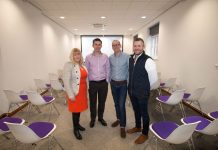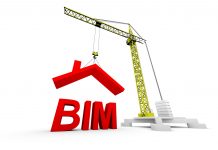John Eynon, Chair of the CIC South East Regional BIM Hub, considers how BIM and the smart city concept work together and whether we are at the point where this can be taken forward…
In considering how BIM and the smart city concept can work together and to what benefit, we need to take a step back and just take a look at life in general.
The stark reality of our lives is that we’ve been digital for years. If you use a debit or credit card, the Internet, email, text, messaging or even web shopping then already there is huge digital file on you sitting somewhere in the cloud. It’s quite easy for the digitally savvy types to find out quite a lot about you using the right tools without even getting out of bed. A sobering thought.
In addition, we’ve embraced smart technology with gusto – we all swipe, tap, pinch, spread, flip and whatever with touch screens and smart phones. Even toddlers do it! And we buy tickets, shopping, check the weather, travel, email, play games and much more with the mini computers in our pockets. We’re mobile, connected, and using information 24/7. We are all data traders now.
BIM is just an extension of all this moving into the built environment industry. Sharing digital project information, between all the stakeholders, effortlessly, efficiently, around the clock, at all stages and around the lifecycle. This is all accessible on our tablets and phones –anywhere, anytime.
It is worth noting that BIM isn’t just about a single project, but about sharing information across projects, sectors, estates, cities, regions, and nations even. BIM actually provides the missing link, between the project and the world.
Around the world, there are many Smart City initiatives, where urban infrastructure is being built containing sensors to provide data, on say, traffic, weather, people movements, carbon and energy emissions and so on. These sensors share data on all kinds of things to make our lives easier – being connected to your own home’s environmental systems for instance. In the UK we now have PAS 181 The Smart City Framework to provide guidance. BIM enables the built environment industry to join our connected data-centric world.
At its heart BIM is just about information, but in a digital environment. The true value of BIM lies in the asset or project lifecycle. Smart sensors can feed real time data into this data environment for the benefit of the owners and operators.
To conclude, yes we are at the point in history where this can be taken forward. The technology exists and is being used, and OK, it may not be perfect yet but we are definitely on the Smart connected journey.
Migration of the built environment industry to digital ways of working and a Smart society is a natural progression and also absolutely inevitable. Time to get on the train! ■
John Eynon
Chair
CIC South East Regional BIM Hub
Tel: 07702 126 362
johneynon@me.com
www.bimtaskgroup.org/bim-regional-hub-south-east













